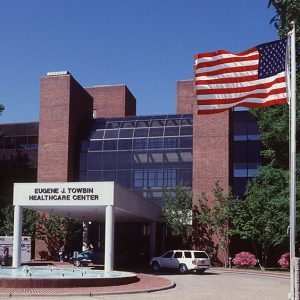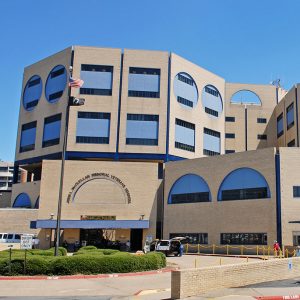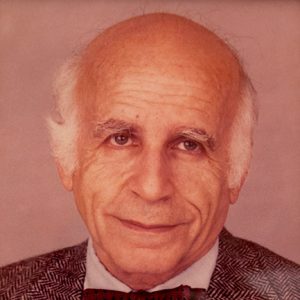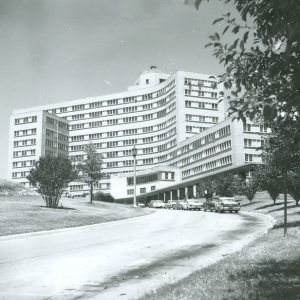calsfoundation@cals.org
Central Arkansas Veterans Healthcare System
The Central Arkansas Veterans Healthcare System (CAVHS) is a Department of Veterans Affairs (VA) healthcare provider. It is part of the South Central VA Health Care Network (VISN 16), which includes facilities in Oklahoma, Arkansas, Louisiana, Mississippi, Texas, and Florida. CAVHS, a tertiary care facility classified as a Level 1b on the VA Complexity Model, is one of the largest and busiest VA medical centers in the country and was recognized nationally in 2010 with the Robert W. Carey Performance Excellence Award—the highest honor a VA facility can receive for quality achievement and service excellence. The system’s two hospitals, John L. McClellan Memorial Veterans Hospital in Little Rock (Pulaski County) and Eugene J. Towbin Healthcare Center in North Little Rock (Pulaski County), provide a broad spectrum of inpatient and outpatient healthcare services, ranging from disease prevention and primary care to complex surgical procedures and extended rehabilitative care. Comprehensive healthcare is provided through primary, tertiary, and long-term care in areas of medicine, surgery, mental health, physical medicine and rehabilitation, neurology, dentistry, ophthalmology, geriatrics and extended care, and women’s health.
The history of the CAVHS began with Fort Logan H. Roots. In 1893, the U.S. Army chose Big Rock in North Little Rock as the location for one of its new military posts. Fort Logan H. Roots, as it was later named, served as an important military training facility in the late nineteenth and early twentieth centuries. When the United States entered World War I in 1917, Camp Pike (now Camp Joseph T. Robinson) was constructed to provide the military with a larger training facility.
Fort Roots always maintained a hospital; during the 1918 influenza epidemic, a barracks was converted to a hospital ward to accommodate the increased patient load. Therefore, it made sense for the fort to be transferred in 1921 to the Public Health Service for use as a veterans’ hospital. On April 29, 1922, Executive Order No. 3669 placed Fort Roots under the control of the newly established Veterans Bureau. Fort Roots remains an important part of the U.S. Department of Veterans Affairs, serving veterans in Arkansas and surrounding states. Although Fort Roots has been reduced in acreage over the years, and buildings have come and gone, many of the post’s early structures still circle the parade ground. The Fort Logan H. Roots Military Post Historic District was listed on the National Register of Historic Places on September 4, 1974.
In December 1945, Senator John L. McClellan announced the approval of a 500-bed hospital for veterans to be built on Roosevelt Road in Little Rock. Throughout his term in office, he continually sought to improve healthcare and benefits for veterans. Among McClellan’s last major achievements were his successful battles to secure appropriation and approval for the hospital on Roosevelt Road: the John L. McClellan Veterans Administration Hospital, completed in 1948.
Eugene Jonas Towbin accepted a position with the Little Rock Veterans Administration Hospital following his discharge from the U.S. Army in 1954. Towbin became associate chief of staff for research and education beginning in 1960. He was promoted to chief of staff of the Little Rock VA Hospital in 1968. He also became associate dean of the University of Arkansas, College of Medicine (now the University of Arkansas for Medical Sciences—UAMS). Under his leadership, the VA hospital became one of the VA’s flagship institutions, providing tertiary healthcare as well as offering major medical research programs. Once the two new VA hospitals—one in Little Rock located on the campus of UAMS (completed in 1984) and another in North Little Rock on the old Fort Roots campus (completed in 1983)—were operational, he was asked to be chief of staff of both hospitals. He was a pioneer in the field of geriatric medicine, and his influence brought the first Geriatric Research Education and Clinical Center (GRECC) in the country to Arkansas. He was instrumental in obtaining funding for the John L. McClellan Memorial Veterans Hospital in Little Rock and was one of the founders of the geriatrics program at UAMS. The CAVHS main hospital building on the North Little Rock campus was formally named the Eugene J. Towbin Healthcare Center in May 1996.
As of 2014, CAVHS has 280 hospital beds on both campuses as well as a 119-bed Domiciliary Residential Rehabilitation Treatment Unit that provides long-term rehabilitative care and a 152-bed community living center on its North Little Rock campus. CAVHS reaches out to veterans through its eight Community-Based Outpatient Clinics (CBOCs) in Conway (Faulkner County), Hot Springs (Garland County), El Dorado (Union County), Mountain Home (Baxter County), Mena (Polk County), Pine Bluff (Jefferson County), Russellville (Pope County), and Searcy (White County). These eight clinics serve veterans living in the northern, western, and central counties of Arkansas, as well as border counties in surrounding states. The four VA-staffed CBOCs are the Hot Springs, Conway, Russellville, and Searcy clinics. The Day Treatment Center operates in downtown Little Rock, a home health care service center is based in Hot Springs, and a vet center is located in North Little Rock.
CAVHS also serves as a teaching facility for more than 1,500 students and residents enrolled in more than sixty-five educational programs; its principal affiliate is UAMS.
For additional information:
Central Arkansas Veterans Healthcare System. http://www.littlerock.va.gov/ (accessed October 30, 2025).
“Dr. Eugene Towbin Devoted to Medicine but Led Balanced Life.” Arkansas Democrat-Gazette, September 4, 2003, p. 4B.
Little Rock VA Medical Center. “75 Years of Caring, 1922–1997: A History of the VA Medical Center Little Rock/North Little Rock Campuses.” On file at the North Little Rock History Commission, North Little Rock, Arkansas.
Miller, Janet. Chronicle of a Century: The Story of Fort Roots. North Little Rock, AR: Veterans Administration Medical Center, 1993.
Miles Brown
Central Arkansas Veterans Healthcare System
 Eugene J. Towbin Healthcare Center
Eugene J. Towbin Healthcare Center  John L. McClellan Memorial Veterans Hospital
John L. McClellan Memorial Veterans Hospital  John L. McClellan Memorial Veterans Hospital
John L. McClellan Memorial Veterans Hospital  Eugene Towbin
Eugene Towbin  Veterans Hospital
Veterans Hospital 



Comments
No comments on this entry yet.